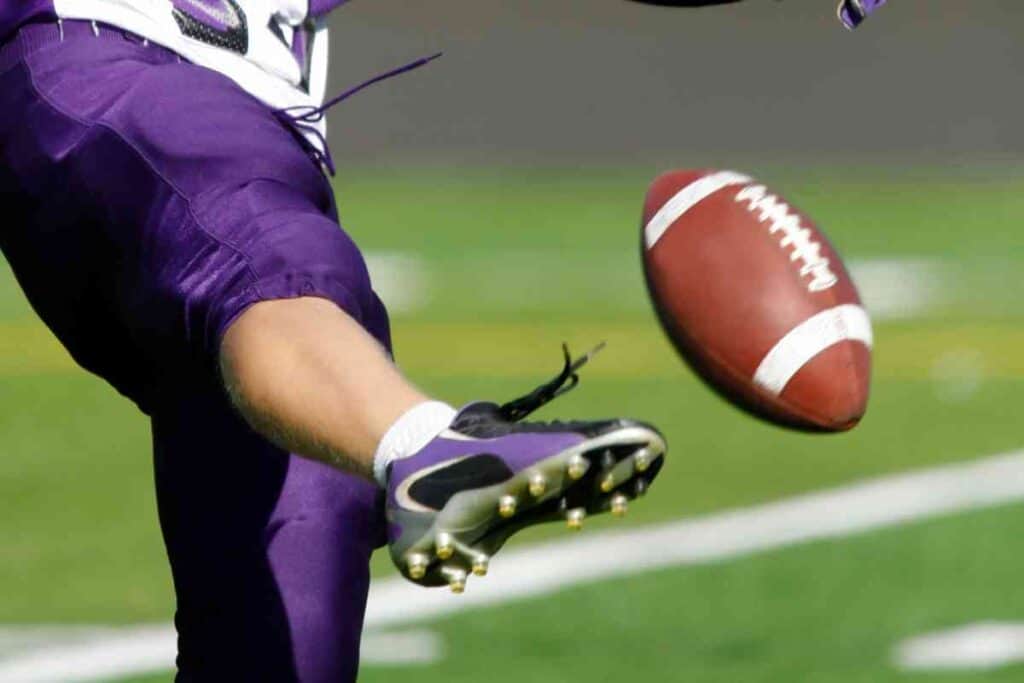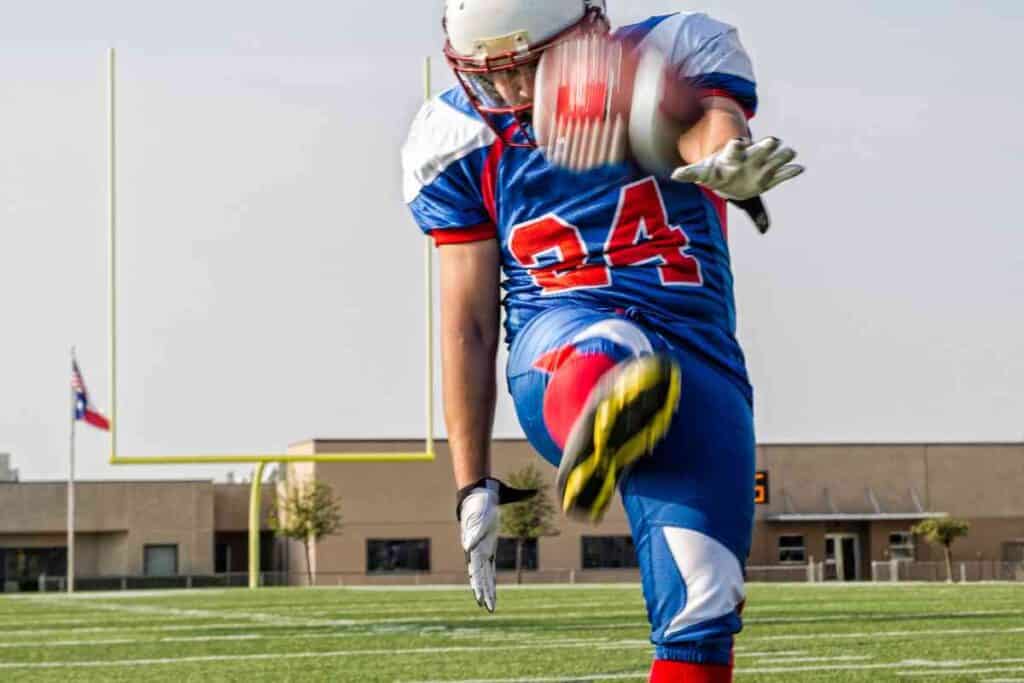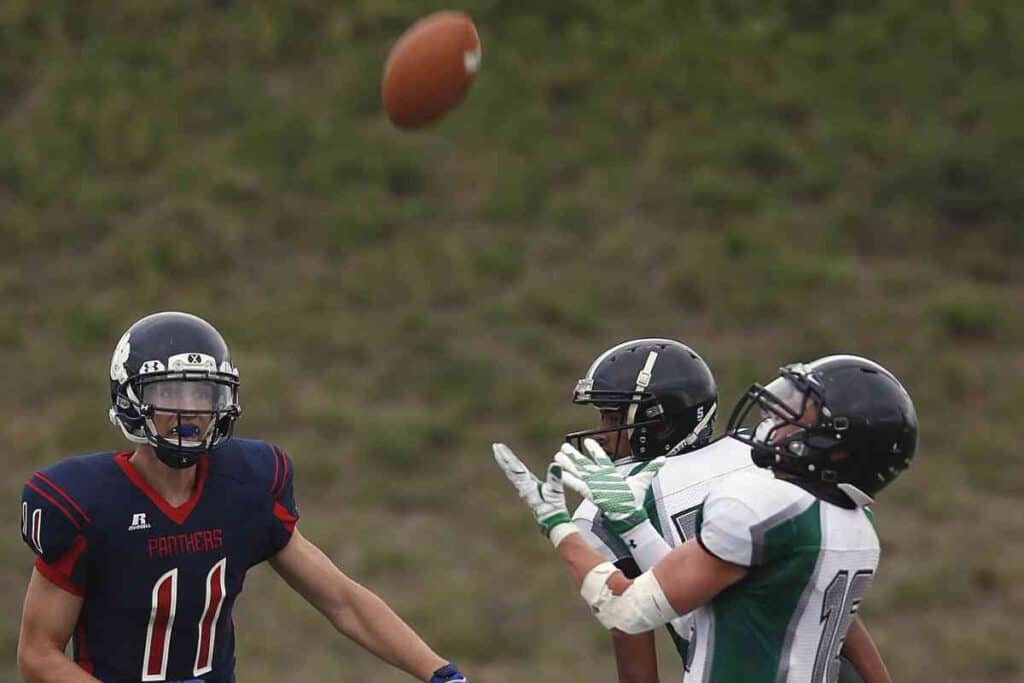Why Can’t You Advance A Muffed Punt In College Football?
Football is governed by many rules for specific situations. Let’s learn why teams can’t advance the ball on a muffed punt in college football.

Why Can’t You Advance A Muffed Punt In College Football?
In college and NFL football, only the receiving team can advance the football forward. While the rulebook doesn’t offer a specific reason for this, speculation about the rule indicates that the rule encourages the receiving team to try and catch the kick. The rule also reduces easy touchdowns.
We’ll talk about muffed punts and some aspects of college football that you might not have known about, in addition to the reasoning behind some rules.
What is a muffed punt?
What does it mean to muff a punt? The slang terminology used to describe what actually happens during football isn’t easy to explain, but the actual action is: A muffed punt occurs when the receiving team drops the football while making an effort to catch it during a punt.
Keep in mind that this is separate from actually having possession of the ball after catching it.
A muffed punt implies that the receiving team never “possessed” the ball before it came up for grabs.
What is the college or NFL rule about muffed punts?
The rule in college and NFL says that the kicking team (the team that is punting the ball away) can recover the dropped ball, but may not advance it.
When we say advance it, we mean move it forward to gain additional yardage or even a touchdown.
So if the ball is dropped by the receiving team and picked up by the kicking team at the 20-yard line, the ball will remain on the 20-yard line even if the kicking team has the opportunity to move it forward.

Why does the rule not allow for the advancement of muffed punts?
This is one of those situations where we aren’t exactly sure why the rule is in place, though in some respects it makes sense for football as a competitive sport and source of entertainment. We have a few reasons why we think that you cannot advance a muffed punt:
Encourages catches
If the advancement of a muffed punt were allowed, the kick returner would take on greater risk if he were to try and catch the ball outside of the end zone.
A dropped punt inside the 20-yard line could easily be returned for a touchdown. Instead, the ball is placed where it was recovered.
Competitive nature
Let’s say we have two teams playing, but one is very good, and the other is not. The team that is not very good would be at an additional disadvantage if dropping a kick meant that they could easily give up points faster.
Having the chance to get the defense out on the field and prevent points from racking up can make a football game more interesting to watch.
It’s also worth noting that unlike a traditional kickoff – or even a thrown pass, a punt can be kicked with a bit of spin which makes it more difficult to catch than normal.
No defense
Among other reasons, the NCAA and NFL might think that having no defense behind the kick returner puts the return team in an unfair position to attempt to stop the advancement of the ball.
It’s not a fumble
Think about a “muffed” or dropped punt as something different than a fumble.
A player who is attempting to catch a punk and drops it never actually had possession, so it makes some sense that the kicking team wouldn’t be allowed to advance the ball past its spot.

Can the kicking team advance a fumble?
Yes, should the receiving team possess the ball, whether they caught it or let it bounce, the kicking team can then attempt to force a fumble on the play. The kicking team would be able to advance the ball and retain the yards for advancing the ball.
For example, if the kick returner caught the ball and took a couple of steps, then lost the ball, the kicking team could recover and advance the ball.
Why is the rule confusing to some?
The rule is confusing mostly because many people don’t know about the specific rule. They might see a fumble on a kickoff and think that the same rule governs a muffed kick return.
Players also often run to the end zone to celebrate scoring a touchdown and might make the fans think that a touchdown has been scored when that’s not quite the case yet.
Fair catches
If you’ve been watching football for a while – or even just a few games, you’ve noticed the fair catch rule. The fair catch rule allows the kick returner to signal that they don’t intend to advance the ball forward after catching.
You see this most often when the kicking team already has players near the kicker who would otherwise be able to tackle that player immediately.
You also might see a fair catch signaled when the kick returner is already surrounded by the defense!
The rule is made for these situations too – should a kick return “muff” a fair catch, the ball is loose and can be recovered by either team, but not advanced by the kicking team.
Key Takeaways
- While the college nor NFL rulebook are overly specific about why muffed punts can’t be advanced by the kicking team, there are likely reasons
- These reasons include the muffed punt not being a fumble
- Catching a punt is also relatively difficult given the spin a kicker can put on it
- Allowing the advancement of muffed punts makes scoring too easy, especially in lopsided games
- A fumble – after the ball has been fully possessed, can still be advanced.
